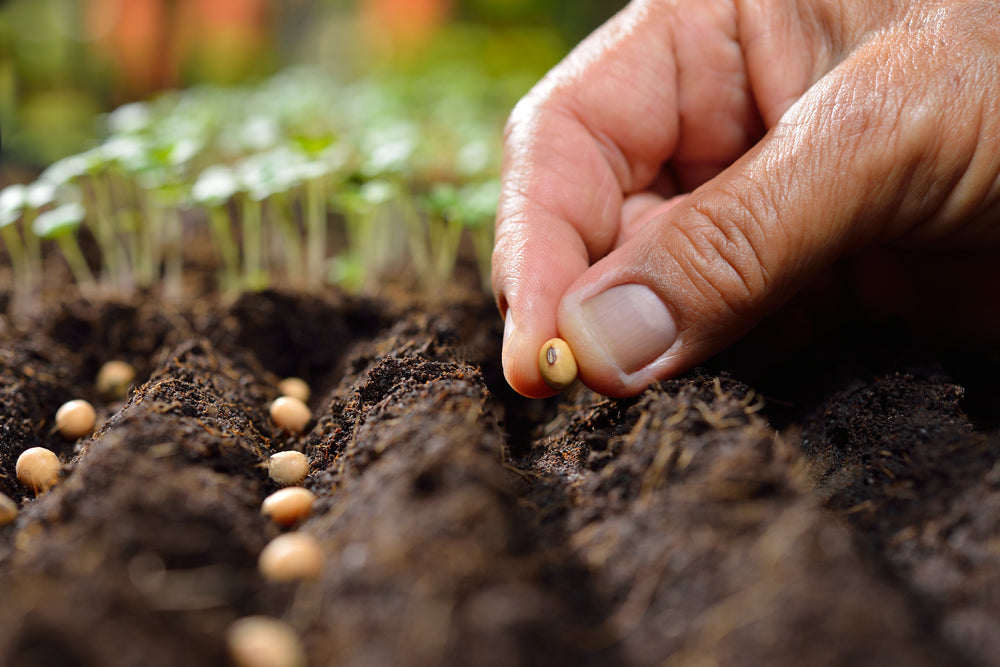Ganesh Chaturthi, the vibrant and joyous celebration of Lord Ganesha's arrival, is a cherished tradition in India. However, in recent years, the environmental impact of this festival, particularly the immersion of idols made from non-biodegradable materials, has raised concerns. As we strive for a greener and more sustainable future, it's time to rethink our Ganpati celebrations. This blog delves into the broader impact of eco-friendly Ganpati celebrations on the environment and inspires readers to adopt sustainable practices, including the symbolic act of planting seeds. Let's explore how we can sow the seeds of change and nurture a healthier planet.
▶The Environmental Footprint of Traditional Ganpati Celebrations
Traditional Ganpati celebrations often involve the use of idols made from materials like plaster of Paris (PoP), which do not biodegrade easily. The immersion of these idols in water bodies contributes to water pollution, harming aquatic life and ecosystems. In addition, the chemicals used in idol-making can contaminate water sources.
Moreover, the use of single-use plastic decorations, excessive energy consumption through lighting, and firecrackers add to the festival's environmental impact. It's crucial to address these concerns and transition towards more eco-friendly celebrations.
▶The Eco-Friendly Ganpati Revolution
Eco-friendly Ganpati celebrations, also known as "Green Ganesh Utsav," are gaining popularity for their minimal ecological footprint. Here's how these celebrations are making a positive impact on the environment:
➡Eco-Friendly Idols:
Many artisans are now crafting Ganpati idols using eco-friendly materials such as clay or paper mache. These idols dissolve harmlessly in water, leaving no pollutants behind.
➡Plantable Ganesha Idols:
Some creative artisans are making Ganpati idols embedded with seeds. After immersion, these idols sprout into plants, symbolizing the circle of life and regeneration.

➡Natural Decorations:
Eco-conscious individuals are opting for natural and biodegradable decorations like fresh flowers, leaves, and eco-friendly rangoli made from rice flour.
➡Energy-Efficient Lighting:
Using LED lights and energy-efficient lighting options reduces energy consumption during the festival.
➡Low-Noise Celebrations:
Choosing low-noise firecrackers or avoiding them altogether helps reduce noise pollution.
▶Planting the Seeds of Change: Symbolism and Sustainability
One powerful and symbolic practice of eco-friendly Ganpati celebrations is planting seeds. It not only represents the rebirth of life but also contributes to a greener planet. Let's explore different types of seeds you can use and their names:
✔Flower Seeds:
Planting flowers like marigold, sunflower, or zinnia can bring color and beauty to your surroundings. These flowers attract pollinators and contribute to biodiversity.
✔Vegetable Seeds:
Growing vegetables like tomatoes, peppers, or cucumbers can provide you with fresh and healthy produce while reducing your carbon footprint.
✔Herb Seeds:
Herbs like basil, mint, and cilantro can thrive in small pots or gardens. They not only add flavor to your meals but also have various health benefits.
✔Tree Seeds:
Planting trees like neem, peepal, or banyan can have a lasting impact on the environment. Trees absorb carbon dioxide, release oxygen, and provide habitat for wildlife.
✔Lawn Seeds:
If you have outdoor space, consider planting grass seeds for a green and lush lawn. Lawns help reduce soil erosion and provide a natural cooling effect.
▶How to Incorporate Seed Planting into Ganpati Celebrations
◼Seed Ganesha:
Consider bringing home a seed-embedded Ganesha idol. After immersion, plant it in your garden or a pot, and watch it grow into a beautiful plant.
◼Seed Prasad:
Distribute prasad consisting of seeds and encourage your guests to plant them as a symbolic gesture of nurturing the earth.
◼Garden Rangoli:
Create a rangoli using flower seeds instead of colored powders. These seeds will sprout into a colorful floral display.
◼Community Planting:
Organize a community planting event where everyone plants seeds in a common area, such as a park or a school garden.
▶The Lasting Impact of Eco-Friendly Ganpati Celebrations
The shift towards eco-friendly Ganpati celebrations may seem small, but its impact is profound. By choosing eco-conscious practices and incorporating seed planting into the festivities, we not only honor tradition but also contribute to a sustainable future. These celebrations remind us of the interconnectedness of all life on Earth and inspire us to protect and nurture our planet.
Eco-friendly Ganpati celebrations, coupled with the symbolism of planting seeds, provide a powerful opportunity to make a positive impact on the environment. As we immerse eco-friendly idols and plant seeds of change, we are sowing the seeds of a greener, cleaner, and more sustainable future. Let's embrace this transformation and celebrate Ganesh Chaturthi with devotion, joy, and a commitment to the well-being of our planet. Ganpati Bappa Morya!
Read More:















